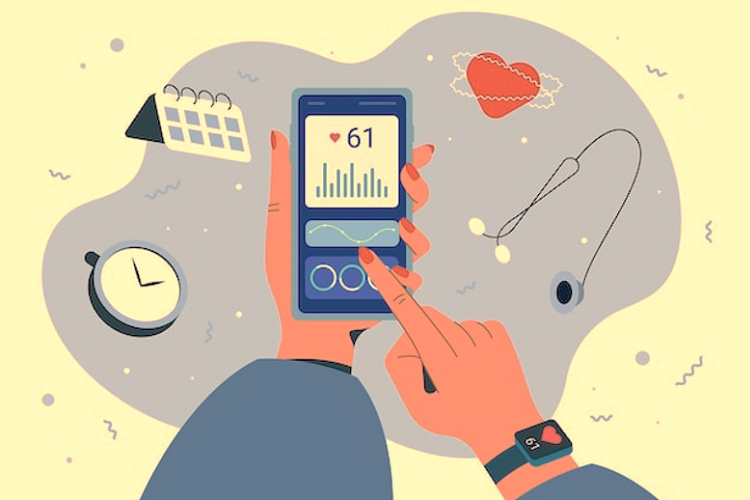This study provides a national picture of the types of anxiety disorders people face today.
Everyone feels anxious occasionally, but some people experience anxiety more frequently and severely than others. Anxiety disorders can disrupt your everyday (normal) life and make you feel helpless and fatigued, especially when not diagnosed and treated soon.
Most anxiety disorders differ by the situations and/or objects that induce them. However, most share similar features, including related behavioral disturbances and excessive anxiety. When left unchecked for long periods, anxiety disorders can interfere with your daily activities such as school work, relationships, and job performance.
For the data presented in this post, you will learn more about anxiety disorders and the best anxiety disorder treatments for you or your loved ones.
What is an Anxiety Disorder?
An anxiety disorder is a mental health condition that makes the affected individual respond to certain stimuli or situations with fear and dread. You may also experience physical signs of anxiety such as sweating and a pounding heart in extreme cases.
While it’s normal to feel anxious from time to time, extreme cases of anxiety could lead to serious health hazards that could be life-threatening. For example, it’s perfectly normal to feel anxious when making an important decision, going for an interview, or taking a text.
In some cases, anxiety can be beneficial because it helps you notice dangerous situations and focuses your attention to fleeing or seeking safety.
However, someone with an anxiety disorder experiences regular and severe worry. These disorders can make it very difficult to go through the day or get anything done.
Fortunately, clinical studies keep finding newer and better anxiety disorder treatments for the affected patients.
Types of Anxiety Disorders
Anxieties are more common now than ever. According to the National Institute of Mental Health, over 19.1% of adults in the US have an anxiety disorder. This number is growing at an alarming rate.
There are several types of anxiety disorders. We will describe the most common ones here:
Generalized Anxiety Disorder (GAD)
Generalized Anxiety Disorder, also known as GAD, is characterized by an excessive worry over everyday things that normally shouldn’t be a source for constant dread. For example, you may fear walking across the streets or near buildings for fear of someone accidentally knocking a heavy object from their window and falling on you. While the chances of such events are possible, they’re unlikely.
Excessively worrying about such things isn’t uncommon for people with GAD. You may also experience frequent unwanted or worrisome thoughts and heart palpitations, which may become severe when left unchecked.
Obsessive-Compulsive Disorder (OCD)
Obsessive-Compulsive Disorder is characterized by the feeling of wanting to complete certain tasks or risk harming yourself when you don’t meet specific goals. For example, you may feel compelled to wash your hands for over ten minutes to prevent yourself from contracting a deadly disease.
That’s why mental health professionals identify OCD as compulsions that aren’t based on reality. However, they can cause excessive stress to the affected individuals, especially when they don’t meet certain goals or complete tasks.
Often, these compulsions are innocuous and hardly create issues. But in more severe cases, OCD may cause you to miss out on social and career opportunities.
In such situations, you must seek professional anxiety disorder treatment to control your anxiety and improve your living conditions.
Panic Disorder
As the name suggests, Panic Disorder arises from panic attacks. These are sudden waves of terror that grip your body to the point that you convulse and sometimes experience difficulty breathing. In more extreme cases, you may think you’re dying.
Panic attacks often subside after about 30 minutes but can leave you feeling fatigued and on edge.
While experiencing panic attacks once or twice in your lifetime isn’t out of the ordinary, multiple attacks in a week or month is a sure sign of Panic Disorder. It is also important that you don’t confuse acute Panic Disorder episodes with GAD.
Post-Traumatic Stress Disorder (PTSD)
Post-Traumatic Stress Disorder, or PTSD, is a condition where you or your loved one goes through a traumatic experience that you have trouble processing and recovering from, making you more stressed and anxious.
Some common PTSD symptoms include reliving the traumatic experience, avoiding episodes or situations that remind you of the traumatic experience.
In situations where you’re reminded of your trauma, you may react with depression or aggression. As a result, PTSD can create major hurdles, especially in conducting your daily practices throughout life. That’s why it’s recommended that you seek professional mental anxiety disorder treatment to address the condition as soon as possible.
Social Anxiety Disorder
Social Anxiety Disorder can make you too afraid to leave your house for fear of other people judging you. That’s why most people with social phobia find it difficult to maintain friendships or hold down jobs.
The fear of other people’s image and thoughts of you puts you in a state of constant worry about what they think of you. Social Anxiety Disorder can become so severe to the point that you avoid social interactions altogether.
Agoraphobia
People with Agoraphobia often have an intense fear of being unable to get help or overwhelmed by simple tasks. Often, Agoraphobia results from fear of two or more seemingly “intense” tasks or environments like:
- Lines of crowds
- Open spaces
- Enclosed spaces
- Public transportation
- Places outside the house
In severe situations, you may choose not to leave your house altogether. You may be so terrified of suffering a panic attack in public that you prefer to stay inside. If left untreated, Agoraphobia can become life-threatening.
Separation Anxiety Disorder
Separation Anxiety Disorder is often misdiagnosed to be a condition for young children only. However, there are cases where adults also experience this form of anxiety. Some of the common symptoms associated with Separation Anxiety Disorder include:
- Near-constant fear of losing a loved one to a natural disaster or disease
- Excessive worry about being away from your loved ones
- Avoiding leaving home for fear of being away from your loved ones
While children are known to experience these symptoms more, they’re less common in adults. In most cases, Separation Anxiety Disorder may arise when you’re exposed to new environments or situations that are possibly life-changing.
In any case, this anxiety disorder treatment requires professional assistance and care.
Risk Factors for Anxiety Disorder
You must note that anxiety disorders don’t arise from personal weaknesses, character flaws, or issues with upbringing. To date, researchers still don’t know the exact causes of anxiety disorders. But they suspect some key factors to play a role, including environmental, genetic, developmental, and psychological factors.
Studies also show that anxiety disorders run in families, suggesting that they can be passed on through genes and environmental stresses.
Anxiety Disorder Treatment
You will notice a few constants across the forms of anxiety disorders above. They’re induced by an irrational fear of nervousness. They exhibit similar physical symptoms like shallow breathing or increased heart rates. Finally, each of these conditions requires professional anxiety disorder treatments.
Left untreated or wrongfully diagnosed, anxiety disorders can lead to stunted growth, social isolation, or even substance abuse. That’s why we advise you to seek immediate help if you or your loved one feels anxious in any way and exhibits the symptoms listed above.






